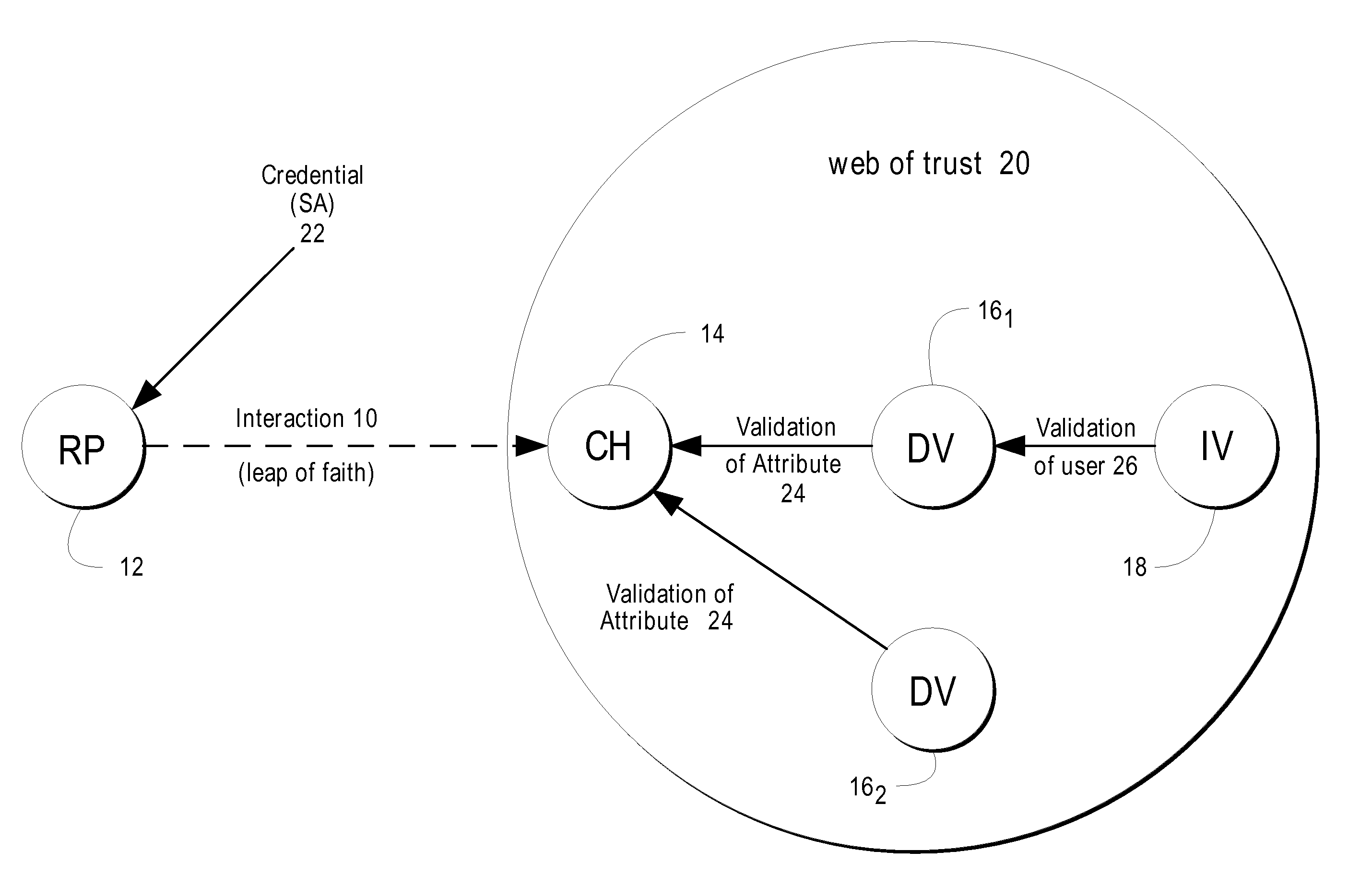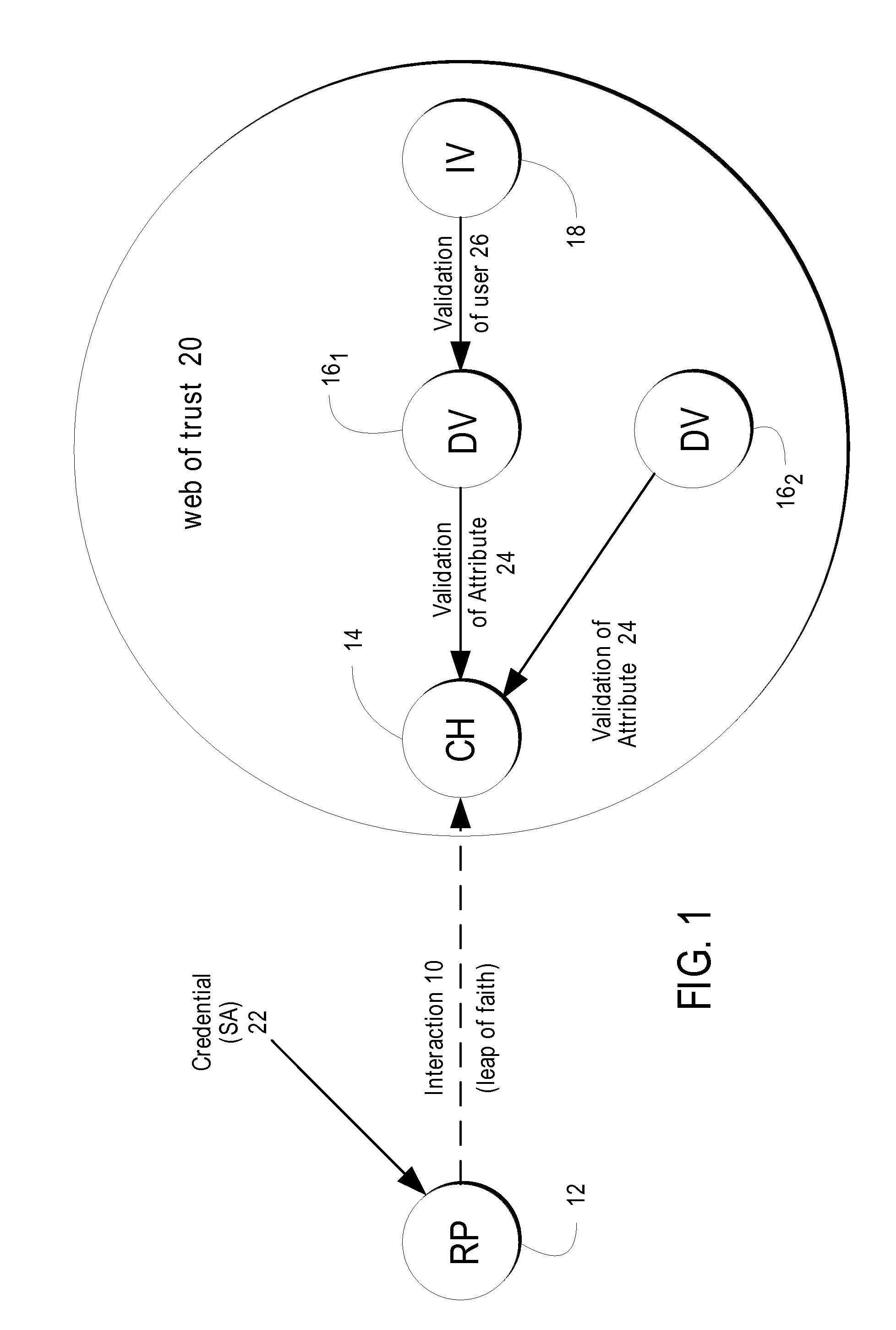Although an ever-growing number of commercial and social transactions take place across electronic mediums, little if anything has been done to assist users of those mediums ensure that thc other parties to those transactions are who they purport to be.
As a result, newspapers and other media outlets report stories of sexual predators prowling social networks, preying on the young and innocent; bigots troll the forums, misleading and bullying
community members; con artists haunt the marketplaces, defrauding on-line buyers and sellers; and members of on-line dating sites complain of dates who lie about their marital status, or look nothing like their posted photos.
By enabling anonymous social interactions that foster creativity and
connectivity, Web 2.0 enterprises unintentionally create opportunities for abuse at the same time.
This involves a certain amount of risk: if the seller plans on abusing the buyer's trust, s / he could take the buyer's money without ever sending the
laptop.
Just like in the physical world, trust in the on-line world is often misplaced; not everyone honors promises.
Second, trust creates the conditions for its own abuse; a person cannot be duped unless she trusts a scammer in the first place.
Consequently, interactions present a social dilemma.
This is especially strange considering that face-to-face interactions provide far more signals about
trustworthiness than on-line interactions.
However, radical trust has a dark side that is jeopardizing these achievements.
Knowing that most readers of the on-line advisory site trust user reviews, Brad posts anonymous and misleading reviews of his run-down motel.
Andy, trusting the
community nature of the site, believes the review, visits Brad's motel, and ends up having a wholly unsatisfactory experience.
1. User-generated content sites: Websites based on user-generated content (e.g.,
collaborative filtering sites, message boards, etc.) operate on an implicit assumption: content users can trust content providers to post accurate information. However, many people (like unscrupulous hotel proprietors) have an incentive to post misleading information. Notably, finance message boards are reputed to be flooded with false rumors and information intended to influence trading decisions that benefit the posters of the information.
2. On-line dating sites: Like user-generated content sites, on-line dating sites depend on their users to provide accurate information. However, many on-line daters have incentives to embellish, omit or enhance important details (e.g., marital status or appearance). Thus, they post false information about themselves or photos taken when they were younger or in much better
physical shape. Many on-line daters complain about such experiences. Additionally, dating sites need to very careful not to allow anyone under the age of 18 into their sites to protect their users from potentially illegal contact with minors via their forums.
3. Social networking sites:
Social network businesses face a homologous problem; they depend on their users to post accurate profiles. Unlike the situation for on-line dating scenarios, not all profile misrepresentations have negative effects; users often post ridiculous ages (e.g., 99) or locations (e.g., Antarctica) as a joke. Yet, not all misrepresentations are harmless. Sexual predators often disguise themselves as children to
gain their targets' confidence. Indeed, such practices are alarmingly widespread. A study by the National Center for Missing and Exploited Children found that 13% of all children using
social network sites received unwanted sexual solicitations. Nearly a third of these solicitations were aggressive, meaning that the solicitor attempted to meet the child off-line. Additionally, 4% of children on-line were asked for nude pictures of themselves. ISAFE, a not-for-profit organization specializing in educating children on
Internet safety, conducted a study that has shown the 1 in 5 children in grades 5-12 have met in person with someone they had originally met on-line. Additionally, with social network profiles and applications / widgets functioning much like business websites, spam is taking on a new form, sent by a supposed “friend” to an unknowing user.
4. Commercial transaction sites: Auction sites and on-line marketplaces face a slightly different problem. Transactions are only possible if sellers trust buyers to pay, and buyers trust sellers to deliver. However, both sellers and buyers face strong incentives to cheat. Although some on-line marketplaces have instituted countermeasures designed to punish cheaters, some types of abuse have nevertheless become commonplace, reducing the overall integrity of all such sites. For instance, shill bidding has pervaded on-line auction sites. in this practice, the seller (or someone in collusion therewith) registers fake bids on items for sale in order to prompt potential buyers into submitting higher bids. Also, high-reputation accounts (i.e., those which seemingly are associated with trustworthy individuals based on a marketplace reputation
score) are available for purchase by fraudsters looking to make a quick sale of an expensive product to an unwitting buyer.
5. Content providers. Radical trust can also extend to businesses interacting with consumers online. Providers of content intended for adult audiences (typically defined as
Internet users older than 18 years old) have a challenging problem enforcing age restrictions for their sites due to this same inability to know who is accessing their sites. Typically, younger users with personal incentives to view this content game the
system to appear to be an adult by simply using someone else's valid
credit card. Perhaps worse, many sites simply ask users to self-assert their ages without undertaking any sort of validation.
Unfortunately, each of these “solutions” possesses exploitable weaknesses.
While such practices are easy and inexpensive to initiate and maintain, they tend to foster a false sense or security which creates opportunities for even greater abuse.
On many sites, bad ratings are linked with negative incentives.
For instance, someone with a low rating on a commercial transaction site will have difficulty finding transaction partners, who are scared off by a bad “reputation”.
Nevertheless, while these measures have tended to reduce abuse, they possess known loopholes that are virtually impossible to adequately police.
Moreover, site operators have almost no way to deter or prevent malicious users from perpetuating frauds with fresh accounts.
Such addresses are virtually impossible to trace back to real-life individuals.
Already this “solution” has spawned other serious problems.
Widespread usage of the national identification number has made it more vulnerable to theft, increasing identify theft across the country.
Furthermore, a real-name policy conflicts with United States law, which prohibits the release of personal information about children under age 13.
Thus, while a real-names policy may deter potential abusers from the most damaging trust abuses, it creates opportunities for widespread
identity theft and is likely politically untenable in the United States.
Although groundbreaking in several ways, reputation systems face the same loopholes as less-sophisticated ratings systems, and they lack any means for truly verifying the user-provided data (e.g., the user's real name) outside of
crawling publicly available websites for confirmation, which must be assumed to provide only self-asserted, un-trusted data.
Thus, despite these efforts, users of these on-line services remain, for all practical purposes, anonymous.
Even worse, nothing stops a user from creating dozens of profiles (each under a different user name, for example), and using them to falsely enhance a fake profile's reputation through positive reviews.
Just as importantly, users who register legitimate complaints face retaliation from their abusers.
Additionally, reputation
system ratings are difficult to interpret.
Unfortunately, a user's reputation in one sphere may not be relevant in another.
Often, reputations are subjective and require a great deal of interpretation.
Thus, reputation ratings have the potential for creating more
confusion than they alleviate and while they may reduce sonic information shortfalls (because individuals may act to protect their reputations), it remains virtually impossible to deter malicious users from starting over with a fresh account.
5. MySpace™: MySpace has become one of the most popular social network sites for minors and faces particular problems in protecting these children against
predation by child molesters.
While admirable, this initiative is fundamentally flawed.
On one hand, nothing stops a potential abuser from
lying about his / her age in his / her profile.
Without a means of verifying self-reported information, the MySpace initiative cannot succeed.
Although intriguing, this concept is not as robust as it appears.
The untrustworthy individual can then vouch for other untrustworthy individuals, and the entire
system collapses.
Thus, the PGP Web-of-Trust could potentially be brought down by a
single point of failure.
This process is very difficult to scale beyond a few users and rollout in a global on-line
community.
Thus, while the Web-of-Trust leverages physical-world manifestations of interpersonal relationships and trust, it possesses no redundancy mechanisms leaving it vulnerable to a
single point of failure (a breach of trust) that can collapse the overall system's integrity.
 Login to View More
Login to View More  Login to View More
Login to View More 


